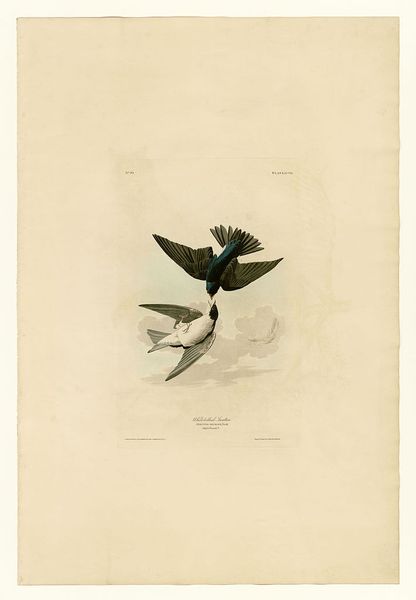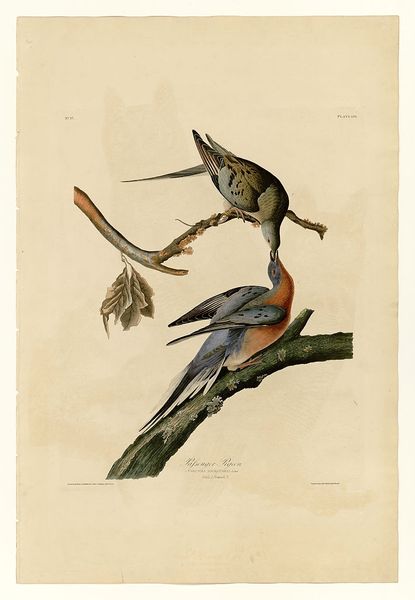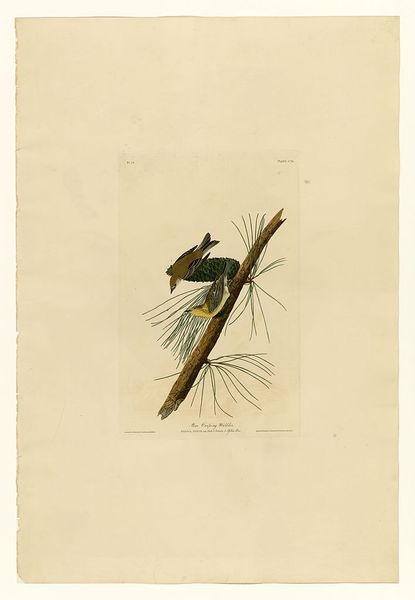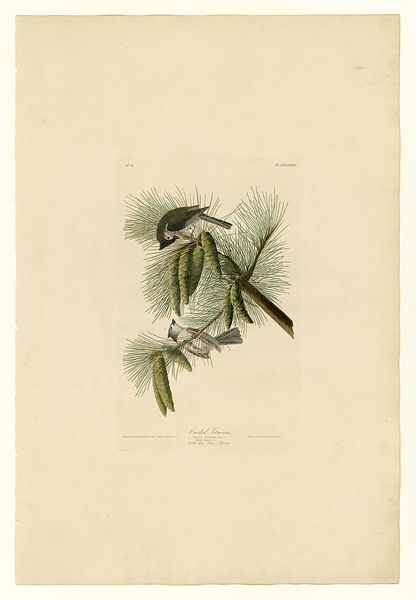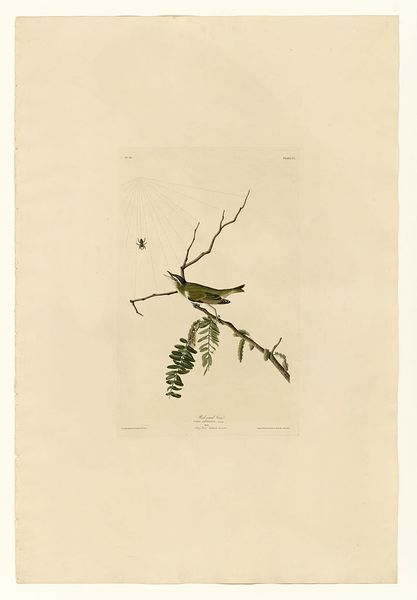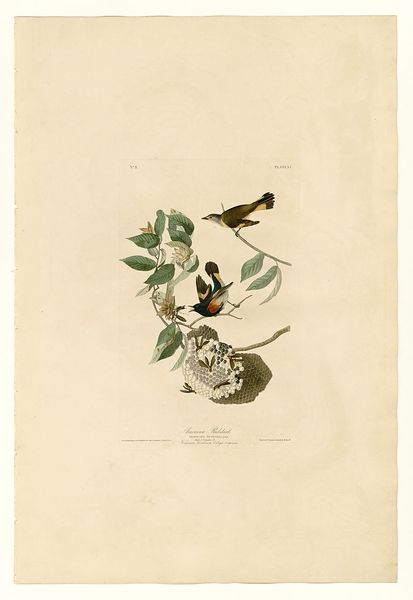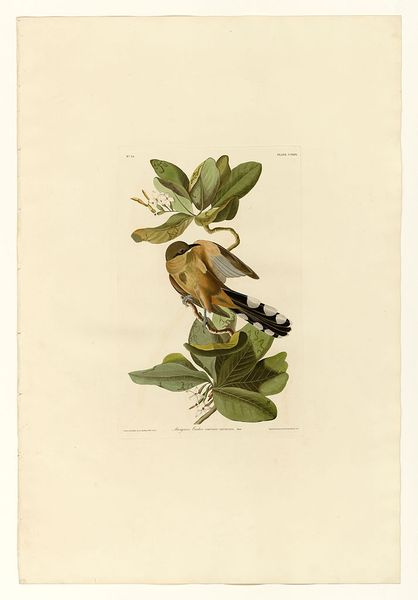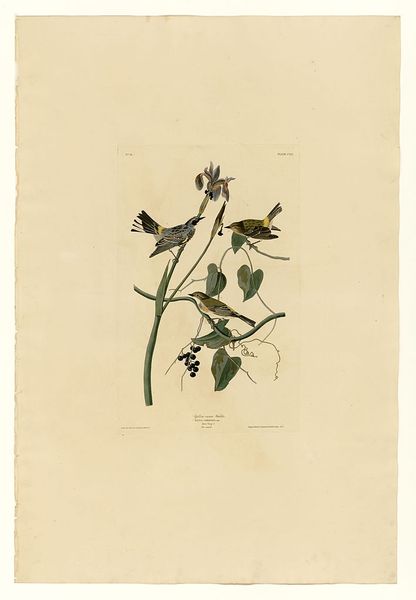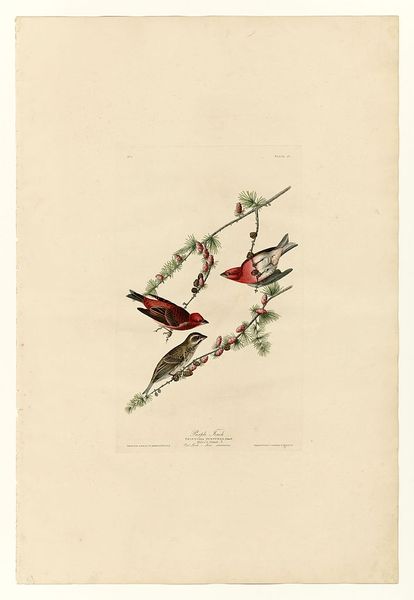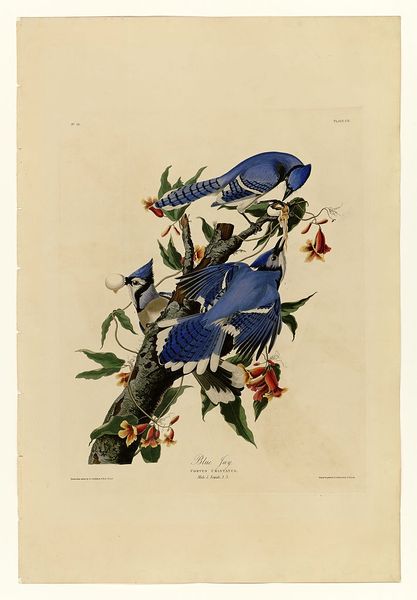
drawing, painting, paper, watercolor
#
portrait
#
drawing
#
painting
#
bird
#
figuration
#
paper
#
watercolor
#
line
#
watercolour illustration
#
genre-painting
#
naturalism
#
botanical art
#
watercolor
#
realism
Copyright: Public domain
Curator: Ah, yes. "Plate 129 Great Crested Flycatcher," by John James Audubon. He probably painted this sometime in the first half of the 19th century. It's watercolor and graphite on paper. Editor: Well, hello there, little flycatchers! It's as though I've stumbled upon a secret rendezvous in the forest. I find them rather whimsical—like a beautifully illustrated page from a fairytale book. There's a lovely feeling of suspension—caught in a moment. Curator: Audubon really brought a sense of scientific observation to his work. His "Birds of America" aimed to catalog all known species, representing a real cultural ambition to map and understand the natural world, and disseminate that information to the public. It became this extraordinary and popular scientific and artistic project, and popularized Naturalism. Editor: Definitely, the realism leaps right out at you, but he couldn't resist stylizing nature's raw beauty to an extent. He was obviously enthralled by the drama of avian life—the hovering bird seems just poised to catch its insect breakfast. The way he captured their energy, the little dramas of daily bird life – magnificent. The colors pop so wonderfully too— that rust-orange against the neutral background sings! Curator: Absolutely. Audubon aimed for scientific accuracy, yet, his dramatic flair made the work immensely appealing. What I find fascinating is how the scale of "Birds of America" influenced natural history illustration and publication for decades afterwards, creating a model of private patronage and public engagement. This type of scientific visual communication played a huge role in promoting scientific inquiry to a wider audience. Editor: It does make you consider what's going to engage people. Facts on a wall wouldn't bring the birds to life, right? But there is something undeniably inspiring in this. The artistry encourages one to consider that all creatures share a fragile interconnected world—we all have our own place. Even if some of us just fly around trying to eat bugs, eh? Curator: Exactly. Audubon wasn’t simply recording birds; he was capturing a sense of the sublime wildness of the American landscape and bringing it into homes and libraries. He showed, visually, the grand aspirations of his nation. Editor: He also left us all the loveliest picture to enjoy, study and imagine—what more could we want?
Comments
No comments
Be the first to comment and join the conversation on the ultimate creative platform.

